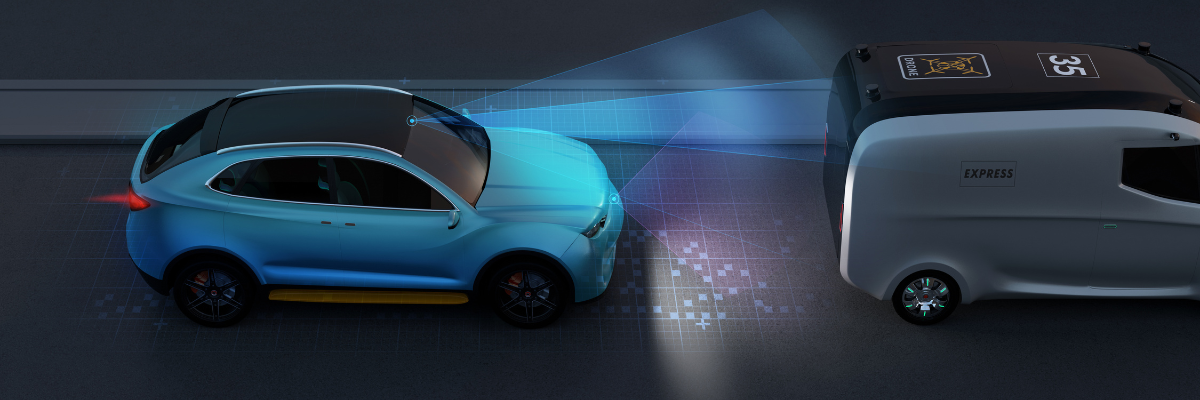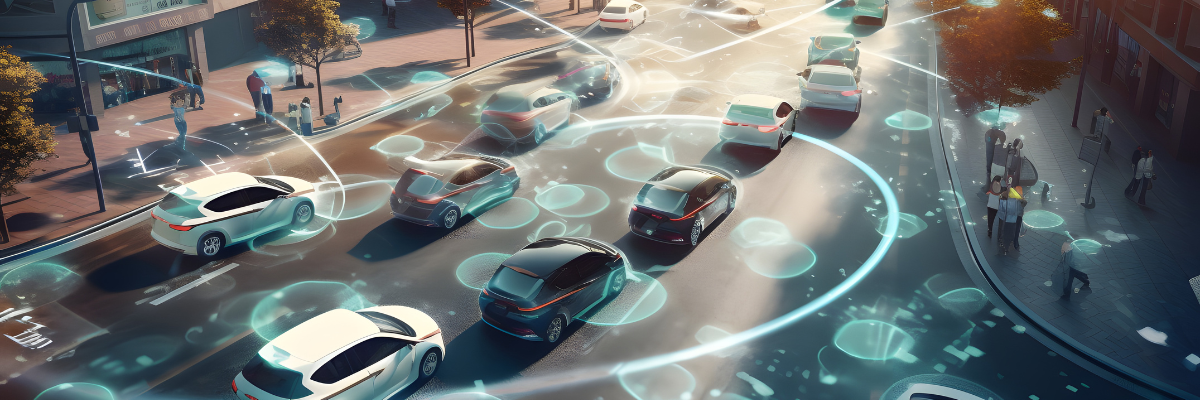The Future of Car Safety Technology
Imagine a world where the phrase “safe as houses” applies to cars. It wasn’t so long ago that seat belts – a basic safety feature we now take for granted – were considered an optional extra. In the early days of motoring, safety was more an afterthought than a design priority. Fast forward to today, and it’s a different story. Cars are now equipped with airbags, anti-lock brakes, and stability control, all standard fare designed to protect us.
But what’s next? The future of car safety technology is not just about cushioning the blow but preventing the collision before it happens. We’re entering an era where cars can talk to each other, where your vehicle not only knows the road but can predict hazards and take action to avoid them.
In this blog, we’ll take a stroll down memory lane to appreciate how far we’ve come and then sprint into the future to explore the exciting new safety features on the horizon. From AI-driven driver assistance systems to cars that can see around corners, the road ahead is looking safer than ever. And for companies like Orion Safety Belts, this future spells an ongoing commitment to innovation and protection. Let’s buckle up and dive into the technologies that will drive us into a new age of automotive safety.
Current State of Car Safety

In the current landscape of automotive safety, the distinction between active and passive safety features is increasingly blurred, thanks to the integration of advanced technology. Active safety features, like electronic stability control and automatic emergency braking, actively prevent accidents. Passive features, such as airbags and crumple zones, are designed to minimise injury when a collision is unavoidable.
The statistics speak volumes about the impact of these technologies. For instance, according to the National Highway Traffic Safety Administration’s (NHTSA) Technical Report 12, the introduction of electronic stability control has been linked to a 50% reduction in fatal single-vehicle crashes for passenger cars. Similarly, other studies have shown that automatic emergency braking can reduce rear-end collisions by 40%, as reported by the news outlet AP News, back in 2022.
But numbers only tell part of the story. Behind every statistic is a network of sensors, cameras, and computers working tirelessly to keep drivers safe. These systems are becoming so sophisticated that they can detect potential hazards, like a pedestrian stepping onto the road or a car abruptly stopping ahead, and react faster than a human ever could.
As we continue to push the boundaries of what’s possible, we’re seeing a shift towards more proactive safety measures. Orion Safety Belts, for instance, is at the forefront of this shift, ensuring that as vehicles become smarter, the fundamental safety component-the seatbelt-evolves in tandem to offer enhanced protection in an ever-changing driving environment.
Emerging Safety Technologies

The horizon of car safety technology is brimming with innovations that promise to redefine road safety. Here’s a glimpse into what’s unfolding:
- Autonomous Driving Advancements: The leap towards self-driving cars is perhaps the most anticipated safety revolution. With the potential to eliminate human error, the leading cause of accidents, autonomous vehicles use a suite of sensors and algorithms to navigate safely.
- Vehicle-to-Everything (V2X) Communication: This technology allows cars to communicate with each other and with road infrastructure, sharing information about traffic conditions, accidents, and road hazards in real time.
- Predictive Technology and Artificial Intelligence in Safety Systems: AI is the brain behind predictive safety, analysing vast amounts of data to anticipate and prevent potential incidents. It can adjust vehicle operation for anticipated road conditions and driver behaviour.
- Augmented Reality Dashboards and ADAS: Augmented reality (AR) dashboards project vital information onto the windshield, allowing drivers to keep their eyes on the road. Combined with ADAS, which includes features like lane-keeping assist and adaptive cruise control, drivers get a comprehensive safety net.
Each of these technologies is a piece in the puzzle of future car safety, working in concert to create a safer driving experience. As we integrate these systems, the role of companies like Orion Safety Belts becomes even more crucial, ensuring that traditional safety measures evolve to complement these cutting-edge advancements.
The Role of Connectivity in Safety

Connectivity is set to become the backbone of car safety, leveraging the Internet of Things (IoT) and big data to usher in a new era of proactive protection. Here’s how:
- Integration of IoT and the Role of Big Data in Car Safety: Cars are becoming smarter, equipped with IoT devices that collect and process data on driving patterns, vehicle performance, and road conditions. Big data analytics uses this information to improve vehicle safety features and design.
- How Connected Cars Can Improve Response Times and Accident Prevention: Connected cars can communicate with traffic systems, emergency services, and other vehicles to enhance situational awareness. In the event of an accident, they can automatically notify emergency responders, potentially reducing response times and saving lives.
The integration of connectivity in car safety is a game-changer, offering not just reactive measures but also preventive solutions. By analysing data collected from various sensors, cars can predict and adjust to potential hazards before they become imminent threats.
This proactive approach to safety is transforming the driving experience, making it safer and more efficient. As we move forward, the synergy between connectivity and traditional safety components, such as seat belts provided by Orion Safety Belts, will be paramount in protecting passengers and drivers alike.
Seat Belts: The Evergreen Safety Essential

Even as we navigate through the advancements in car safety technology, the seat belt remains a fundamental protective measure. Orion Safety Belts, understanding its undiminished importance, offers a range of services to ensure that this critical safety feature is never compromised. Here’s how Orion’s services align with the latest in safety:
- Comprehensive Seat Belt Services: Orion provides thorough inspections, ensuring that seat belts function correctly. They check for wear and tear, proper retraction, and the integrity of locking mechanisms, crucial for seat belt performance in the event of a collision.
- Custom Solutions for Modern Needs: With the rise of connected cars and advanced safety systems, we offer a wide variety of custom seat belt solutions. They cater to the specific needs of modern vehicles, ensuring compatibility with the latest safety technologies.
- Expert Maintenance and Repair: Orion’s expertise extends to the maintenance and repair of seat belts. They understand that a well-maintained seat belt is as vital as any advanced technology in a vehicle’s safety arsenal.
- Installation and Replacement: Our skilled technicians are adept at installing new seat belts and replacing old or damaged ones, using only the highest quality materials that meet safety standards.
By integrating traditional safety measures with new-age technology, Orion Safety Belts plays a pivotal role in safeguarding passengers. Their services ensure that while vehicles become increasingly connected and autonomous, the basic safety measures are not just preserved but enhanced to work alongside emerging technologies.
Navigating the Roadblocks: The Challenges to Car Safety Innovation
As the automotive industry accelerates towards a future of autonomous vehicles and connected systems, it encounters several speed bumps along the way. Here are some of the key challenges that manufacturers and service providers must navigate:
- Regulatory Hurdles: Safety innovations often outpace legislation. Regulators struggle to keep up with the rapid development of car safety technologies, leading to a lag in creating supportive laws and standards. This gap can delay the implementation of new safety features and create a patchwork of regulations that vary by region, complicating global distribution for car manufacturers.
- Cybersecurity Concerns: With the advent of connected cars, cybersecurity has become a paramount concern. The more interconnected the systems, the higher the risk of cyber-attacks. Ensuring the security of car data and protecting against remote hacking attempts is a significant challenge that requires continuous advancement in cybersecurity measures.
- Ethical Considerations of Autonomous Vehicles: The rise of autonomous driving technology brings ethical dilemmas to the forefront. Decisions that were once made in a split second by human drivers are now pre-programmed into vehicles. The industry must consider how these vehicles will make choices in critical situations, balancing passenger safety with the safety of pedestrians and other road users.
These challenges require a concerted effort from industry leaders, policymakers, and technology experts to ensure that the road to safer cars is clear and navigable.
Electrifying Safety: The Impact of EVs on Road Security

The surge in electric vehicle (EV) popularity brings with it a host of unique safety features and considerations. Here’s how EVs are driving change in vehicle safety:
- Safety Features Unique to EVs: Electric vehicles offer a different set of safety attributes compared to their internal combustion counterparts. The absence of a large engine block allows for a more generous crumple zone in the event of a collision. Additionally, the lower centre of gravity in EVs, thanks to battery placement, reduces the risk of rollovers, enhancing stability and safety.
- Battery Technology and Crashworthiness: The design and placement of EV batteries are critical for safety. Manufacturers are constantly innovating to protect batteries from damage during crashes, as compromised batteries can pose fire risks. Advances in battery technology aim to improve not just the energy capacity but also the resilience of batteries to impacts, contributing to the overall crashworthiness of the vehicle.
- EV Emergency Response: Emergency services are adapting to the unique challenges posed by EVs. This includes training for dealing with high-voltage systems and battery fires, which require different approaches than traditional car fires. The industry is also developing new tools and protocols for safely rescuing passengers from EVs while managing the risks associated with their power systems.
As EV technology continues to evolve, so too does the approach to ensuring the safety of these vehicles on the road. With innovation in design, battery technology, and emergency response, EVs are setting new standards for vehicle safety.
Navigating Tomorrow: A Glimpse into the Future of Car Safety
As we accelerate into the next decade, experts are forecasting a transformative era for car safety, marked by groundbreaking innovations and smarter technologies. Here’s what they predict:
- Autonomous Vehicle Proliferation: The dream of self-driving cars is inching closer to reality. With each passing year, we expect to see significant advancements in autonomous driving, potentially reducing human error, which is the leading cause of road accidents.
- AI and Machine Learning: Artificial intelligence (AI) and machine learning will become more sophisticated, enabling vehicles to make real-time decisions to avoid hazards and protect passengers better.
- Advanced Material Use: The development of new, more resilient materials for vehicle construction will enhance passenger protection and vehicle durability.
- Enhanced Connectivity: The integration of Internet of Things (IoT) devices will lead to vehicles that are not only aware of their internal status but also actively communicate with traffic systems, other vehicles, and even pedestrians to prevent accidents.
The Road Ahead: Steering Towards Safer Horizons

In conclusion, the future of car safety technology is a promising journey towards reducing risks and safeguarding lives. Consumers can look forward to a new wave of safety features that will make driving less hazardous and more enjoyable.
Manufacturers, on their part, must continue to innovate and adopt these technologies while also ensuring they remain accessible to all. Collaboration between tech companies, automotive manufacturers, and regulatory bodies will be key to integrating these advancements seamlessly into our daily lives.
As we embrace these changes, drivers and industry players alike must stay informed and prepared for the evolving landscape of car safety. By doing so, we can all contribute to a future where road safety is not just a goal but a standard. With that being said, get in touch with us or have a look at our other blogs for more on the latest trends in the automotive industry and on-road safety!
